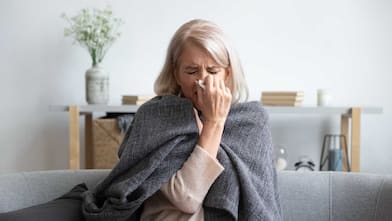No matter the color, let mold know it isn't welcome in your home
Ah, the joys of homeownership. If you think you might have black mold in your home, it’s smart to perform a visual inspection. If confirmed, mold remediation is going to be your next step. Learn how to easily check for black mold in your home (and what to do if you find it), so you and your family can breathe easier.
1. Start With a Visual Inspection
Your first step is to perform a visual inspection. You’ll want to start with places that are likely to be exposed to moisture. Also, follow your nose. A telltale musty, mildew smell generally accompanies mold.
Check the following spaces for signs of mold:
Attic spaces
Basements
Crawl spaces
Under kitchen and bathroom sinks
Check for any discoloration or evidence of water damage that needs repair. Mold thrives in damp locations that don’t get too hot or too cold.
2. Buy a Testing Kit to Confirm the Presence of Mold
Once you’ve done a visual inspection, it’s time to test any discolored spots you’ve found with a mold testing kit. These kits are available at home improvement stores and cost between $10 and $50. Some test kits are usable on surfaces, while others test your indoor air.
However, these tests will tell you if you have mold but not what type of mold. To determine the species to see if you have black mold, you’ll have to send your kit to the lab. Instructions for sample collection and shipping are provided with the kit.
Be sure to wear gloves and a mask when testing for mold to avoid skin exposure and inhalation of spores.
3. Hire a Professional Mold Remediator if Needed

If you’ve determined you have black mold, or smell a musty, earthy scent but can’t find the source, you may want to consider calling in a professional mold remediation service. Professional mold remediation generally costs between $1,300 and $3,500, but the cost could be lower depending on the size of the area.
It’s possible to DIY mold removal, but keep in mind that this variety of mold is more serious than others and can cause respiratory issues. You’ll want to wear a protective face mask, gloves, and air-tight safety goggles, whether you’re using bleach or a mixture of tea tree oil and grapefruit extract.
If you hire a local mold removal company instead, they will check areas in the home that are inaccessible without certain gear, like inside wall spaces, in the ventilation system, or between floor joists.
If mold is present, the remediators will follow a series of steps to get mold back to normal levels, including the following:
Plastic sheeting to separate contaminated areas from non-contaminated
Killing of mold colonies with antimicrobial cleaners
Removal of contaminated areas
HEPA filtration to eradicate any airborne spores
Leak repair
Home damage
4. Take Steps to Prevent Black Mold From Returning
Prevention is key. There are several ways to help prevent black mold from developing in your home.
Use dehumidifiers in damp spaces like basements and crawl spaces
Remove or replace any areas on walls or ceilings that have water damage
Use ventilation fans in bathrooms and kitchens
Repair all leaks, as even small ones can spread mold in your home
Vent all fans to the outside of the home, not the attic, basement, or crawl space, including your dryer vent hose
What Exactly Is Black Mold, Anyway?
Black mold doesn’t refer to one specific type of mold—lots of molds are black. And different types of mold can grow in a home. The “black” mold you might find in your home can range in color from black and gray to dark green, and are usually slimy or shiny.
With the exception of spores from the mold Stachybotrys chartarum, most molds are relatively harmless. For people with compromised immune systems, allergies to mold, or who may be sensitive to mold spores, infestations can be problematic, causing allergies and congestion.
Black mold can be problematic not only for your physical health but for the health of your home. Mold infestations can cause respiratory problems for some people and can lead to structural problems in your home due to rot. Mold in your air ducts can cause allergic reactions as well.
If you see (or smell) anything that looks like mold, testing and remediation are the way to go.





